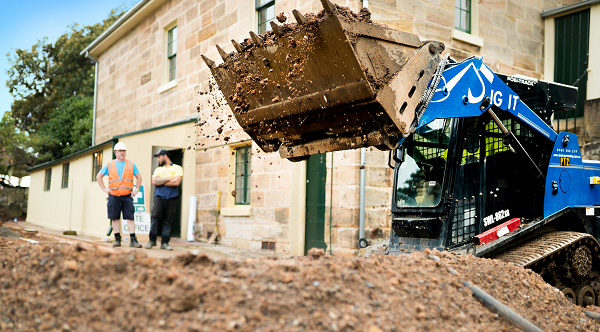Nothing compares to an in-ground concrete swimming pool. While above-ground pools have a lot going for them, including a quicker and easier installation process, if you want a pool that’s eternally appealing, easier to access, makes watching the kids more feasible and adds real value to your home, then installing an in-ground concrete swimming pool is the way to go.
Many homeowners choose to arrange the building of their pools themselves which has a number of advantages – when you know what you’re doing. These include lower financial outlay and greater design flexibility, though as there’s so much involved, including hiring earthmoving equipment and working with designers, it’s essential that you seek expert advice and plan the project exceptionally well. DIG IT offers machine hire including excavators at honest rates, so if you’re looking for cost-effective earthmoving equipment, our hire services are a top choice.
Plan the Project
The importance of properly planning your project can’t be stressed enough as there really is a lot involved if you arrange the project yourself instead of having a local swimming pool company build it for you. What’s more, you should ensure the project is financially viable before making any concrete decisions and commit to paying for any products or services, including earthmoving equipment hire.
Maximising space is an essential aspect of any home swimming pool project and most new home buyers have limited space in the backyard due to this trend. However, that doesn’t mean that having a swimming pool at home isn’t feasible (you can opt not to have full perimeter access to the pool if that makes it more viable), though it does mean that you need to position the swimming pool perfectly and take care of the following before you start making arrangements with product and service providers.
- Site survey – Start the project with a site survey if the swimming pool will be built close to the border of your property. While most swimming pool projects don’t require a survey of the site, if it will be located within 2 metres of your neighbour’s property it may be required.
- Council permits – Depending on your local council, a council permit may be mandatory. This is something you need to check with the planning department at your local council and if one is an essential requirement, you must have this before you start hiring service providers.
- Site access – In addition to earthmoving equipment such as skidsteer loaders and mini-excavators, both of which are used to dig swimming pools, the swimming pool builders will need to bring in concreting and other equipment. Clear access to the work site is, therefore, essential.
- Budget – Naturally, the cost of building a swimming pool is a major aspect of determining whether such a project is feasible, so you’ll need to obtain quotes from a number of service and product providers and work out the total cost of carrying out the project.

Earth moving Equipment Considerations
To dig the area for the swimming pool either a skidsteer loader or a mini-excavator will be required. While there are some fundamental differences between the two, both are suitable for digging swimming pools when fitted with the correct attachments and both offer excellent site access as they’re narrow enough to access most backyards and work sites. While you can rely on DIG IT for expert advice to hire the right item of earthmoving equipment, here are some of the most important things to consider:
- A full workday is usually required to excavate an average size swimming pool. This is an estimate, as underground obstacles may be found which require extra excavation work to remove or work may need to stop until a decision can be made. What’s more, if there are obstacles that prevent the earthmoving equipment from accessing the site, this can increase the time it takes to complete the job, so make sure the site is accessible in advance.
- The area excavated for the swimming pool will usually produce about six truckloads of soil. DIG IT offers tipper hire at cost-effective rates and we can arrange for a local tip to take the soil from your project.
- The area excavated needs to be about one metre longer and wider than the length of the pool as well as about 0.5 metres deeper. This additional area should be taken into account at the planning stage to ensure feasibility of the project and it may mean that a survey of the site is required if the excavated area is within a short distance of the boundary.
- Temporary barriers may be required to meet local council regulations. You should contact your local council with regard to this though, generally speaking, as long as the work site area is surrounded by a fence it should be deemed acceptable. However, if the work site area was exposed and could be accessed by a pedestrian, then a temporary barrier may be required.
Naturally, there’s a lot more involved in excavating an area in which to install a concrete in-ground swimming pool. However, here at DIG IT we can provide you with expert advice on what equipment you will require and offer competitive rates, as well as helping with the tipping of the soil or other materials as necessary. Get in touch with us today to discuss your project, we would love to help.